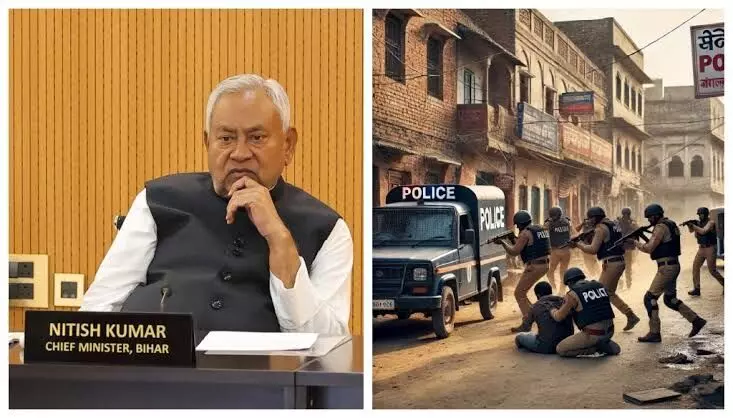Nitish Model: Crime Rates Plunge as Government Cracks Down on Criminals, Empowers Police with High-Tech Tools

Bihar has undergone a dramatic transformation over the last decades under the leadership of Chief Minister Nitish Kumar. There was a time when Bihar’s name evoked fear. The 1990s were marked by rampant crime, deeply broken law and order system, caste violence, murders, political instability and kidnappings for ransom were routine, frequent. In November, 2005, Nitish Kumar took charge, when the state was at a its peak of crime.
The core of this transformation was the introduction of the ‘Speedy Trial’ model, a judicial and policing reform that focused on fast-tracking cases and ensuring quick convictions.
The immediate focus on law and order marked the beginning of the change, making a dramatic impact.
Over 70,000 convictions were secured, with nearly 47,000 convicts receiving sentences of two years or more, effectively disqualifying them from government jobs or public office, between 2006 and 2012.
Murders dropped from 3,861 cases in 2004 to 3,138 by 2019. Kidnappings for ransom, which was one of the major concern, fell sharply—from 411 cases in 2004 to just 43 in 2019. The initiative sent a strong message: crime would not be tolerated under the new administration.
But it wasn’t just about convictions. Nitish Kumar also pushed for deep structural reforms in policing. The number of police stations in the state grew from 817 in 2005 to 1,380 today. Hundreds of stations were either newly built or upgraded. Police mobility was enhanced too—the state now has over 12,000 police vehicles, up from just 4,000 two decades ago.
In a bid to modernize emergency response, the state rolled out the Dial 100 system in Patna in 2014, later expanding it into the Dial 112 service across Bihar. The service now offers integrated emergency help—police, ambulance, fire, and traffic—through a central control system.
At major traffic intersections in Patna, high-tech emergency help boxes have been installed. A press of a button connects citizens directly to the city’s control center, alerting authorities in real time while also transmitting live CCTV footage and location data. More 2,100 surveillance cameras are already operational, with plans to expand further.
Cases are now required to be fully investigated within 60 days. The government also restructured police duties: one division now handles law and order, while another focuses solely on investigations—ensuring neither function is neglected.
Recognizing the need for more inclusive representation, Nitish Kumar also introduced 35% reservation for women in Bihar Police recruitment from 2013. Over 28,000 women now serve in the force, making Bihar’s female police representation the highest in India at 25.3%, compared to 12.3% in Delhi.
To combat rising cybercrime, 44 cyber police stations have been established across the state, along with a 24/7 helpline (1930) and a national reporting portal. A dedicated call center staffed by 150 officers now handles cybercrime complaints in real time.
What began as a promise of ‘sushasan’—good governance—has turned into a sweeping overhaul of the state’s law enforcement system. “People still remember the fear of the 1990s,” says Rajkumar, a senior Patna High Court advocate. “Back then, even the court had called it ‘Jungle Raj’. That label doesn’t apply anymore.”
While challenges remain, Bihar’s crime control model under Nitish Kumar is now seen as a case study in turning around a broken system—through a mix of swift justice, technology, police reform, and political will.
